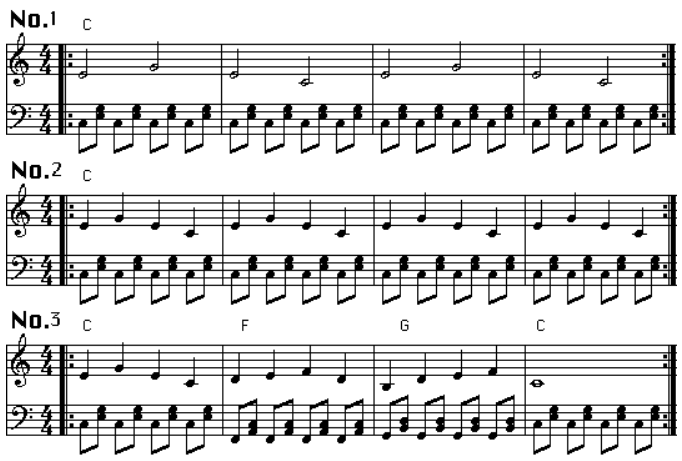

Lesson 10 - Section 1
Learning to Play a New Song
When you first begin to practice a song that has notes written for the left hand and for the right hand, there is a customary way to practice.
Lesson 10 - Section 2

Three Practice Songs
Time to put all that Left Hand Chording practice to work. Look at each of the three practice songs in the image for this section. In the Bass Clef, a Left Hand chord pattern is shown based on the C Major chord. And, in the Treble Clef is a melody line for your Right Hand to play.
Lesson 10 - Section 3
Another star is born. Congratulations!
I am proud of you for coming this far. Please add this to your collection of gold star certificates. I applaud you. Good Job! You have now completed the Intermediate Studies portion of “Piano on the Net” at PianoNanny.com.